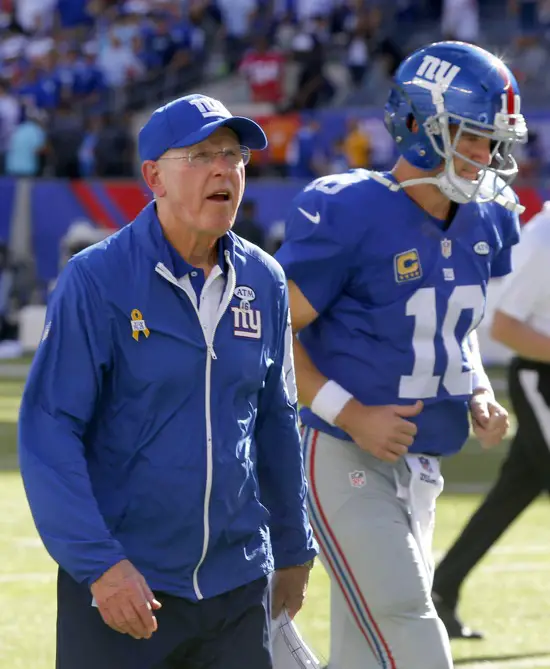![New York Giants 32 – Washington Redskins 21]()
by Eric Kennedy | Sep 25, 2015 | News and Notes
[contentblock id=1 img=html.png] NEW YORK GIANTS 32 – WASHINGTON REDSKINS 21… The New York Giants may have saved their season with a convincing 32-21 victory over the Washington Redskins at MetLife Stadium on Thursday night. The Giants improved their...

by Eric Kennedy | Sep 20, 2015 | News and Notes
[contentblock id=1 img=html.png] ATLANTA FALCONS 24 – NEW YORK GIANTS 20… The New York Giants squandered another 10-point fourth-quarter lead and fell to the Atlanta Falcons 24-20 at MetLife Stadium on Sunday afternoon. With the loss, the Giants fell to...
![New York Giants 32 – Washington Redskins 21]()
by Eric Kennedy | Sep 14, 2015 | News and Notes
[contentblock id=1 img=html.png] DALLAS COWBOYS 27 – NEW YORK GIANTS 26… The New York Giants had the Dallas Cowboys on the ropes but they let the game slip away in the final seconds as Dallas quarterback Tony Romo hit tight end Jason Witten for an 11-yard...
![New York Giants 32 – Washington Redskins 21]()
by Eric Kennedy | Sep 3, 2015 | News and Notes
[contentblock id=1 img=html.png] New York Giants 12 – New England Patriots 9: The New York Giants defeated the New England Patriots 12-9 on Thursday Night at Gillette Stadium in Foxborough, Massachusetts in their final preseason game. The Giants finished the...
![New York Giants 32 – Washington Redskins 21]()
by Eric Kennedy | Aug 29, 2015 | News and Notes
[contentblock id=1 img=html.png] New York Jets 28 – New York Giants 18: The New York Giants fell to the New York Jets 28-18 on Saturday night at MetLife Stadium in East Rutherford, New Jersey. With the loss, the Giants preseason record fell to 1-2. The Giants...


